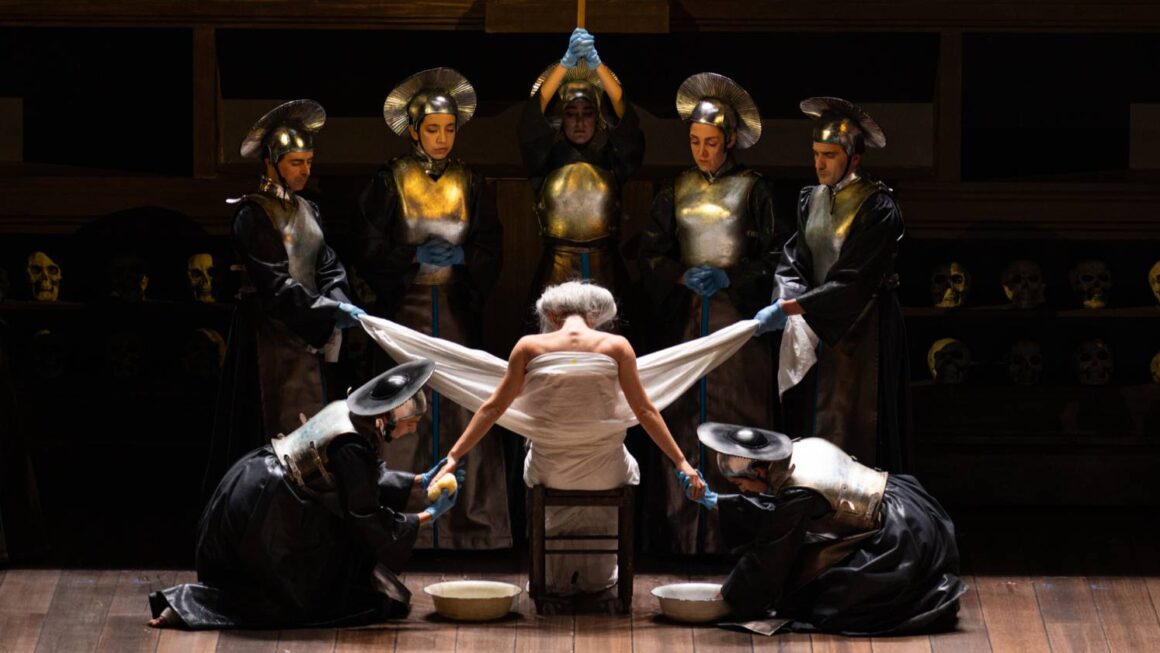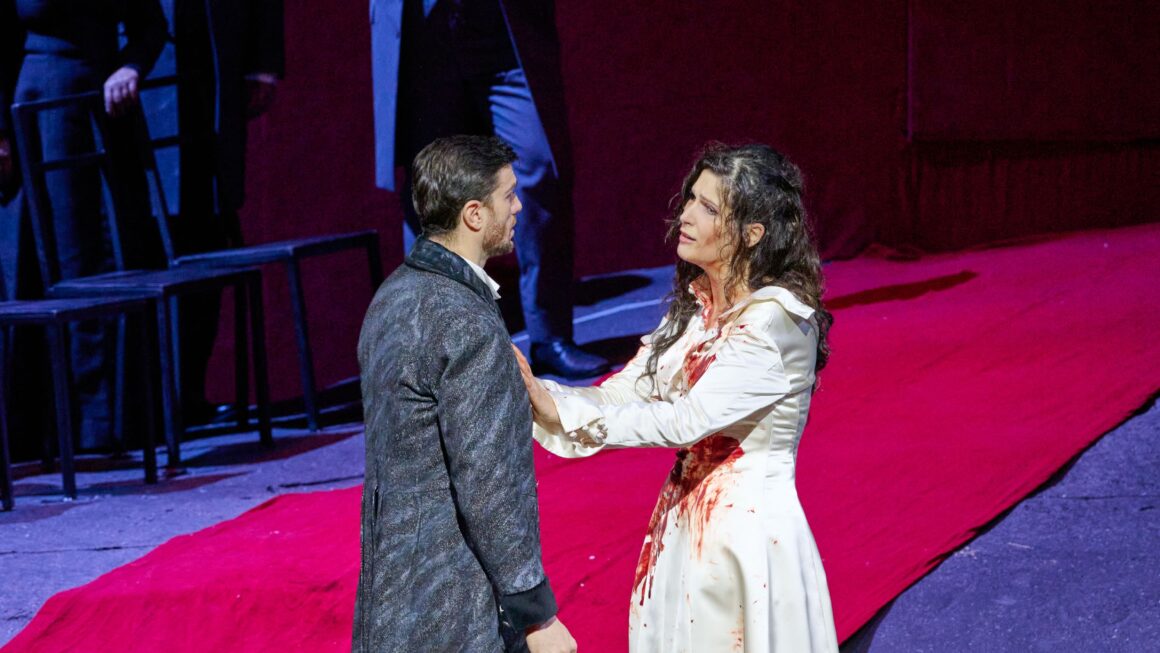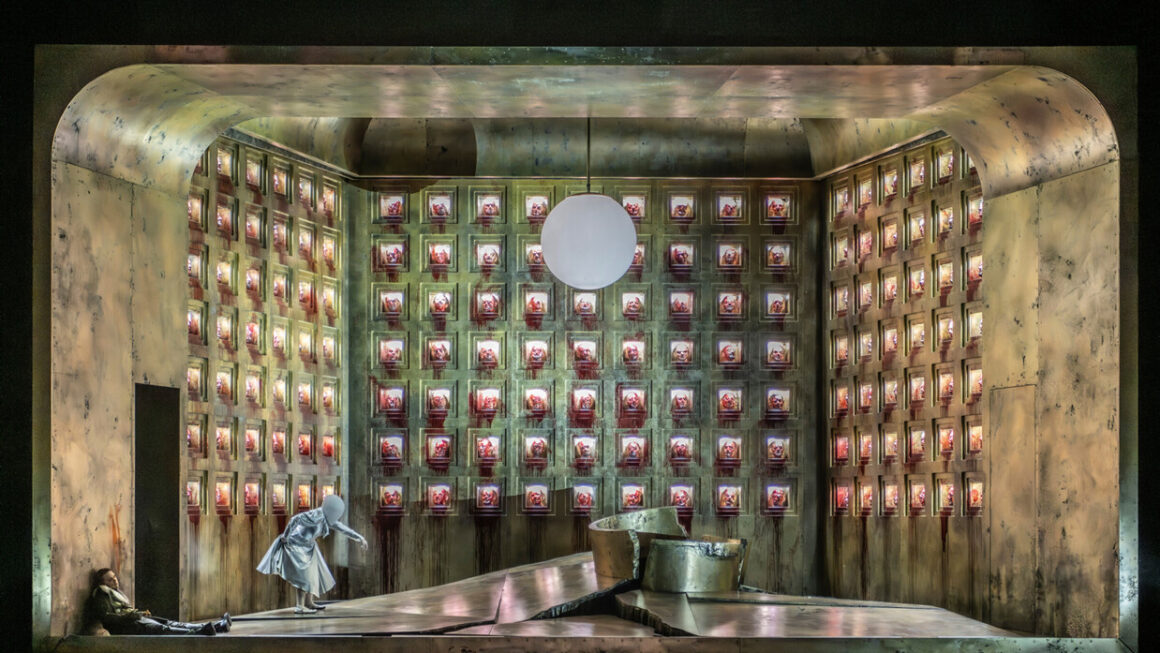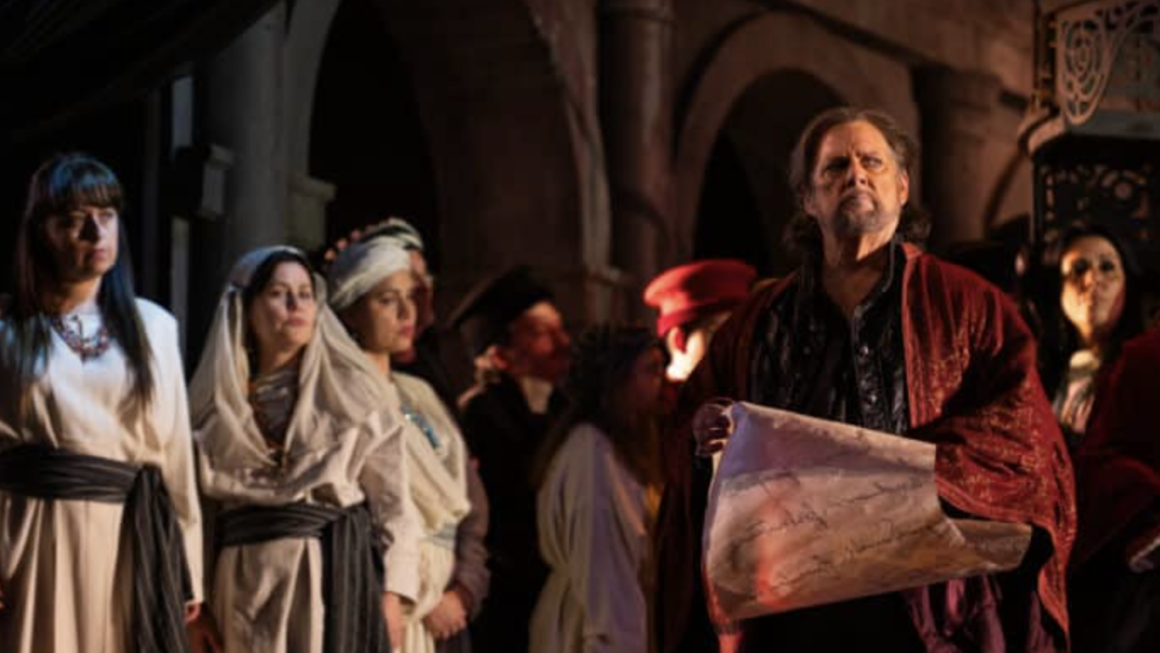“Avec votre permission, l’ai décidé d’entrer au Carmel”
Although Poulenc’s masterpiece has now firmly entered the repertoire in theaters all over theworld, this production of “les dialogues des Carmélites” is the first ever performance in the prestigious and iconic opera house la Fenice of Venice; theater which, just to name a few, hosted the first performances of Tancredi (1813), Semiramide (1823), Ernani (1844), Attila (1846), Rigoletto (1851), Traviata (1853), the Rake’s Progress (1951), the Turn of the Screw (1954).
The opera enjoyed great success from its first performance, which took place at the La Scala theater in Milan, in January 1957, in Italian language and with performers of the caliber of Leyla Gencer, Virginia Zeani, Fiorenza Cossotto and the first version of the opera in French, which took place 6 months later at the Opéra Garnier, with the extraordinaire stage and vocal interpretation of Denise Duval and Régine Crespin.
A masterpiece of the genre defined as “Literaturoper”, it is the setting to music of the text by Georges Bernanos, inspired by an event that occurred during the French Revolution, during which 16 French nuns, who had refused to renounce their vows , were sent to the guillotine.
The work aroused strong controversy for its subject, in an era marked by the contrast between the Catholic Church of Pius XII and the atheism of the Soviet Union, and for the substantially tonal musical language in a cultural milieu that saw the presence on the scenes of the music of Nono, Boulez, Varése, Stockhausen with the most prominent intellectuals who considered Poulenc, a fervent religious man and declared homosexual, as a dangerous reactionary.
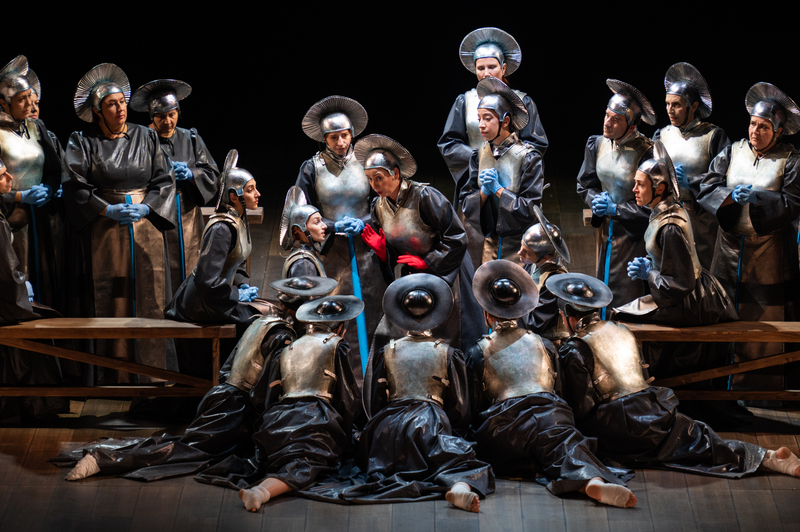
As always happens, time makes justice, and “les dialogues des Carmélites”; excite audiences all over the world for the modernity with which it narrates the fear of living, the torments of the soul and the mystery of faith. The Venetian staging is the same one that inaugurated the Rome Opera season in 2022, directed by Emma Dante. The sicilian director signs her most successful opera show, dealing with an almost entirely female text very close to her themes and sensitivity ; furthermore it certainly benefits from being represented in a smaller and more intimate theatre, where the meticolous acting of the singers, the suggestive stage movements stand out at the best, and the paintings by Jacques-Louis David, at the basis of the stage reading, almost seem to be mirrored in the golden stucco work of la Fenice. The direction renounces investigating the historical and religious context, to tell an all-female story of rebellion serching for freedom and overcoming one’s own fears, on a path of growth that ends heroically in martyrdom. The Carmelite nuns, dressed as warrior nuns, with helmets that look like a halo, are mutilated at their arrival at the cloister by stones in their feet and going limping during all the performance.
This time too there is no lack of Emma Dante typical moments, Blanche’s father in the wheelchair, the nuns running on bicycles, but the show has more than one moment of great suggestion; the death of the old prioress, the extraordinary Anna Caterina Antonacci, has a particular emotional impact, with the ironing board becoming a deathbed. Equally engaging is the scene of the final martyrdom, the famous and moving Stabat Mater, in which the nuns return to the picture frames which are covered in white with each stroke of the guillotine, with Blanche singing her last prayer and dying high up on the cross. The cast lined up for the occasion is excellent, even if the least convincing is the protagonist Blanche de La Force, played by soprano Julie Cherrier-Hoffmann. The singer fits perfectly into Dante’s stage vision, playing a Blanche who initially overcome by fear of the world, consciously chooses the path of freedom and martyrdom. Despite of the beautiful color, the voice appears insufficient in volume and projection for the role, so much so that on the forte of the orchestra the high notes become pushed; but it should be noted that this does not affect the overall success of the character.
Anna Caterina Antonacci’s Madame de Croissy is exceptional, a role already performed in Rome, and here if possible even improved. The soprano, one of the greatest singer-actresses of her generation, finds one of her roles of choice, with a declamation pronounced in perfect French and touching accents word for word, and an acting like a great tragedienne, which becomes true theater in the frightening death scene which culminates with a "demande pardon… mort… peur… peur de la morte; which leaves the spectator breathless. An interpretation that can be defined as historical without a shadow of contradiction. Worthy of note is Madame Lidoine of Vanessa Goikoetxea, with her dark voice, powerful and confident in all registers, very authoritative in the role of the new prioress, rendered with appropriate dramatic accents. Equally valid is the scenic and vocal interpretation of Deniz Uzun, as Mére Marie de l’incarnation, with a very beautiful timbre and a technically well-used voice.
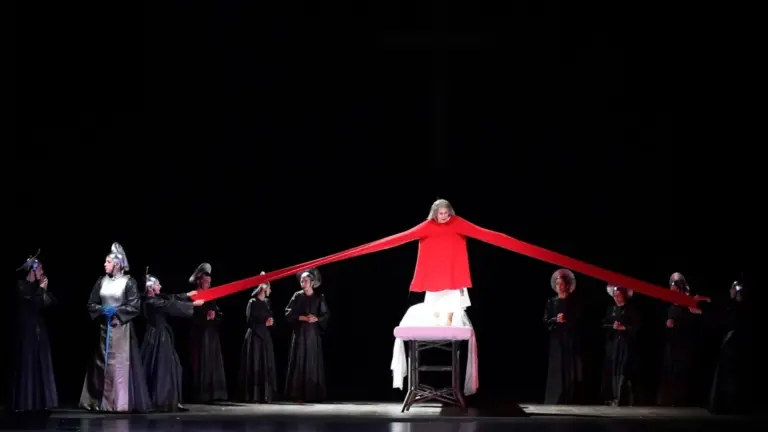
Veronica Marini was also very good, with a captivating lyrical voice and a participatory interpretation in the role of Soeur Constance, Blanche’s best friend. The men’s side is really excellent; the tenor Juan Francisco Gatell is very good as Chevalier de la Force, Blanche’s brother; with a magnificent lyrical voice and excellent diction, he manages the difficult high notes of the part without problems and well faces a vocality that requires great expressiveness. Armando Noguera also sang very well, as Marquis de La Force, with a gorgeous baritone voice. As conductor we find Frédéric Chaslin, much more at ease in this repertoire than in the nineteenth-century one. Chaslin, in renouncing bel suono manages to find sharp and metallic sounds, which blend perfectly with the score and the text of the work. Furthermore, the research into the detail of every single instrument and the meticulous work on the orchestral colors and on every single leitmotiv do justice to the dedication that Poulenc made of the score “A la mémoire de Claude Debussy, qui m’a donné le goût d’en écrire, de Claudio Monteverdi, de Giuseppe Verdi, et de Modeste Moussorgski qui m’ont servi ici de modèles”
For the record, we registered a sold-out theatre, a cosmopolitan audience and great success.
CAST
Marquis de La Force – Armando Noguera
Blanche de La Force – Julie Cherrier-Hoffmann
Chevalier de La Force – Juan Francisco Gatell
Madame de Croissy – Anna Caterina Antonacci
Madame Lidoine – Vanessa Goikoetxea
Mère Marie de L’incarnation – Deniz Uzun
Soeur Constance de Saint-Denis – Veronica Marini
Mère Jeanne de l’Enfant-Jésus – Valeria Girardello
Soeur Mathilde – Loriana Castellano
L’Aumônier du Carmel – Jean-François Novelli
Officier – Gianfranco Montresor
I Commissaire – Marcello Nardis
Le geolier/ II Commissaire/ Thierry/ Javelinot – Francesco Paolo Vultaggio
conductor – Frédéric Chaslin
chorus master – Alfonso Caiani
director – Emma Dante
sets – Carmine Maringola
costumes – Vanessa Sannino
light designer – Cristian Zucaro
choreographer – Sandro Maria Campagna

